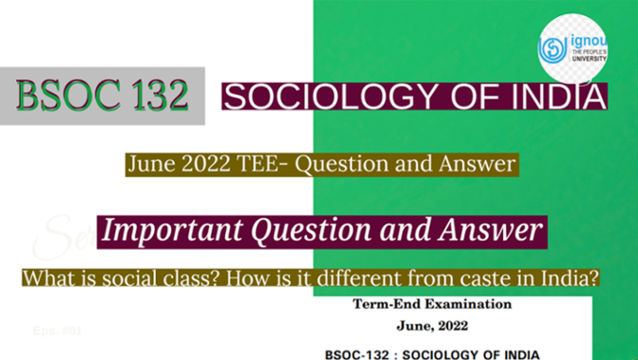Social class has been defined as a kind of social group that belong to similar social positions. Wealth, income, education, and occupation are some of the basic factors that determine social class.
It is relatively open, and anyone who satisfies the basic criteria can become a member. There are several classes in society. These classes are hierarchically ranked primarily in terms of wealth and income. Social classes existed in India during the pre-British period. The following are some examples of social class, Zamindars, Jagirdar, tenants, artisans, merchants, etc.
Social classes are the characteristic features of industrial societies. For example, in a capitalist society, we find the class of capitalists and the working classes among several others.
How class is different from caste?
In Indian society, caste and class, as two different social stratifications or grouping that are connected to each other. Yogendra Singh (1997) mentions that in India, class is often subsumed or absorbed by caste.
The primary difference between caste and class is that caste is a hereditary group and a social class is a category of people who share a similar socio-economic status.
Andre Beteille (1965), on the basis of his study of caste and class in South India, found that the relationship between caste and class has been a dynamic one. In the traditional system, there was greater congruence or harmony between caste and class. But the class system has gradually been dissociating itself from the caste structure.
One can now achieve a variety of class positions whatever one’s position in the caste structure may be. However, caste and class are also closely linked to the power structure which is reflected in terms of the ownership in the ship of property, such as land, political and economic standing in society.
A class is a group or a category formed based on Wealth, income, education, and occupation whereas a caste is a group formed based on heredity, that cannot change over a period of time.

